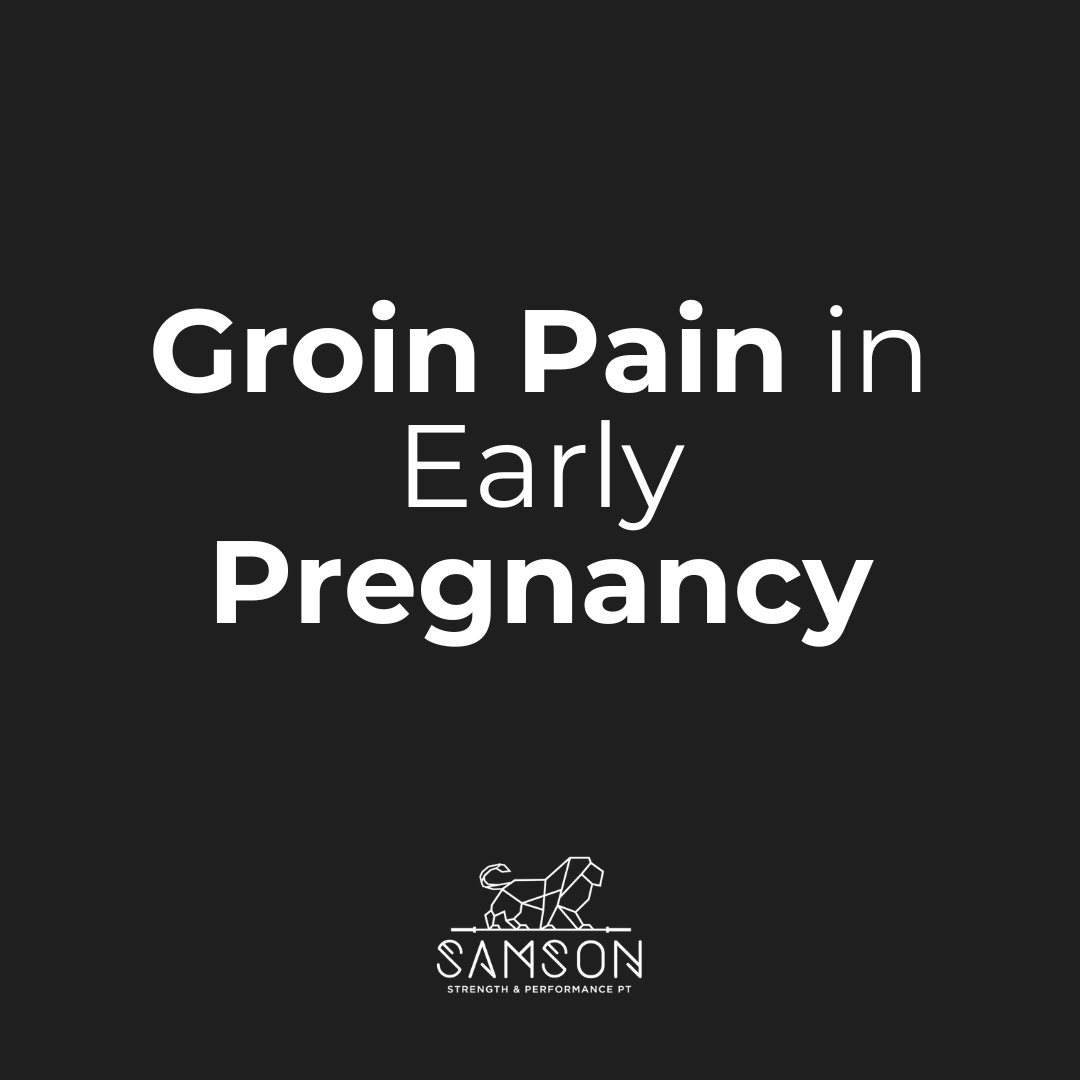Groin Pain in Early Pregnancy
Why Do Some Women Experience Groin Pain in Early Pregnancy?
Pregnancy is an exciting and transformative time, but it can also come with its share of physical discomforts. One common complaint many women experience is groin pain.
While it can be uncomfortable, most of the time, this pain is tied to the many changes happening in the body as it prepares for the growing baby.
Groin pain in early pregnancy could come from several sources:
Round Ligament Pain (or other ligaments in the area)
As the uterus expands to accommodate the growing baby, the round ligaments (which support the uterus) stretch and can cause sharp or aching pain on one or both sides of the groin.
Symptoms can feel like sudden, sharp pain that can occur with movement, such as standing up quickly, coughing, or changing positions.
Ligamentous Laxity
Related to production of relaxin and estrogen
Relaxin associated with remodeling from large diameter to small diameter collagen fibers as well as remodel pelvic connective tissue and activate collagenolytic system
Initial increase in relaxin until peak value at 12 weeks followed by decline until week 17
After week 17, serum relaxin levels stay stable around 50% of their peak value
Hormonal Changes
There are several hormones that increase or change during pregnancy, causing ligaments and tissue in the pelvic area to change to prepare for delivery. This can lead to discomfort in the groin and pelvic region.
Most people blame the hormone relaxin for the “loosening” of joints, but the reality is that there is no definitive research that shows relaxin is the hormone responsible for joint changes let alone that these joints become unstable at all.
At 10-12 weeks gestation: Relaxin is secreted by corpus luteum and placenta during early pregnancy, increases to a considerable level at first trimester, remains steady until late pregnancy, plummets to undetectable in first few days postpartum.
Pelvic Girdle Pain (PGP)
PPGP is common prenatally and postpartum. PGP affects 23–36% of women during pregnancy, and 10–30% following delivery, and up to ten years postpartum
It is hypothesized that symptoms are from dysfunctional load transfer through the pelvis, causing decreased endurance in standing, walking, and sitting.
Pelvic girdle pain is categorized as coming from the SIJ (one or both sides) and/or the pubic symphysis (which would explain the groin discomfort with transitions)
Current studies suggest no correlation between relaxin and pelvic girdle pain
Constipation and Bloating
Early pregnancy hormones (like progesterone) slow down digestion, which can lead to constipation and bloating, both of which may put pressure on the lower abdomen and groin area.
Musculoskeletal Changes
As the body changes to accommodate the growing uterus, women often adapt their daily habits and routines in order to avoid more discomfort and pain.
This can lead to an improper use of muscles, maladaptive patterns of movement, changes in their posture due to the center of gravity shifting forward, using one side of the body more than the other, etc.
This shift in daily living can lead to improper loading and movement through the lower extremities and pelvis which can present as groin pain in some cases
Pubic/Groin Pain in Early Pregnancy
Pubic symphysis regional pain - results from increased motion related to ligamentous laxity in 1 out of every 36 women. The pubic symphysis undergoes anatomical changes during the pregnancy period.
Symphysis widening occurs as early as 8 to 10 weeks of gestation and continues to increase to an average width of 7 mm at full term. Symptoms of pain are more likely to be present if there is a greater than 10mm horizontal or 5mm vertical separation.
Some factors that put women more at risk of having groin pain than others include:
Prior history of pregnancy
Existing orthopedic dysfunctions
Increased BMI
Smoking
Lack of belief in improvement
It is important to understand that when groin pain is severe and persistent, it is crucial to see a pregnancy healthcare provider in order to rule out any life threatening conditions. Once those are ruled out, the next step is to see a musculoskeletal and women’s health physical therapist to thoroughly assess and find the root cause of this issue.
Pelvic PT has been shown to be an effective treatment for managing groin and pubic symphysis pain during pregnancy. Research indicates that pelvic PT can help improve pelvic loading and reduce pain through a combination of strengthening exercises, manual therapy, and postural education.
Studies have found that specific exercises targeting the pelvic floor, gluteal muscles, and core can help alleviate the symptoms of Symphysis Pubis Dysfunction (SPD) and pelvic girdle pain (PGP) by improving muscle strength and coordination.
A systematic review published in The Journal of Obstetrics and Gynaecology (2016) concluded that women who underwent pelvic PT experienced significant reductions in pain and disability related to PGP and SPD.
Additionally, pelvic PT can teach women strategies to reduce strain on the pelvis, such as proper posture, body mechanics, and the use of maternity support belts, further contributing to symptom relief and functional improvement.
Looking for pelvic floor physical therapy in Jacksonville Beach, FL?
If you’re looking for personalized, one-on-one sessions to address your pelvic floor concerns, we provide pelvic floor physical therapy services to women in the Jacksonville Beach area.
If you’re looking for providers who will listen to you and help you get to the root cause of your pelvic health concerns, we’ve got you. We’re here to help you if you’re experiencing pelvic pain, pelvic heaviness, leaking, or are pregnant/postpartum and want to continue safely working out/running/lifting during your pregnancy and get back to your sport after birth.
Get started today by booking a discovery call.

